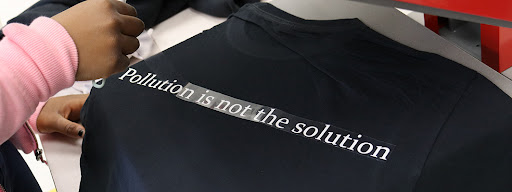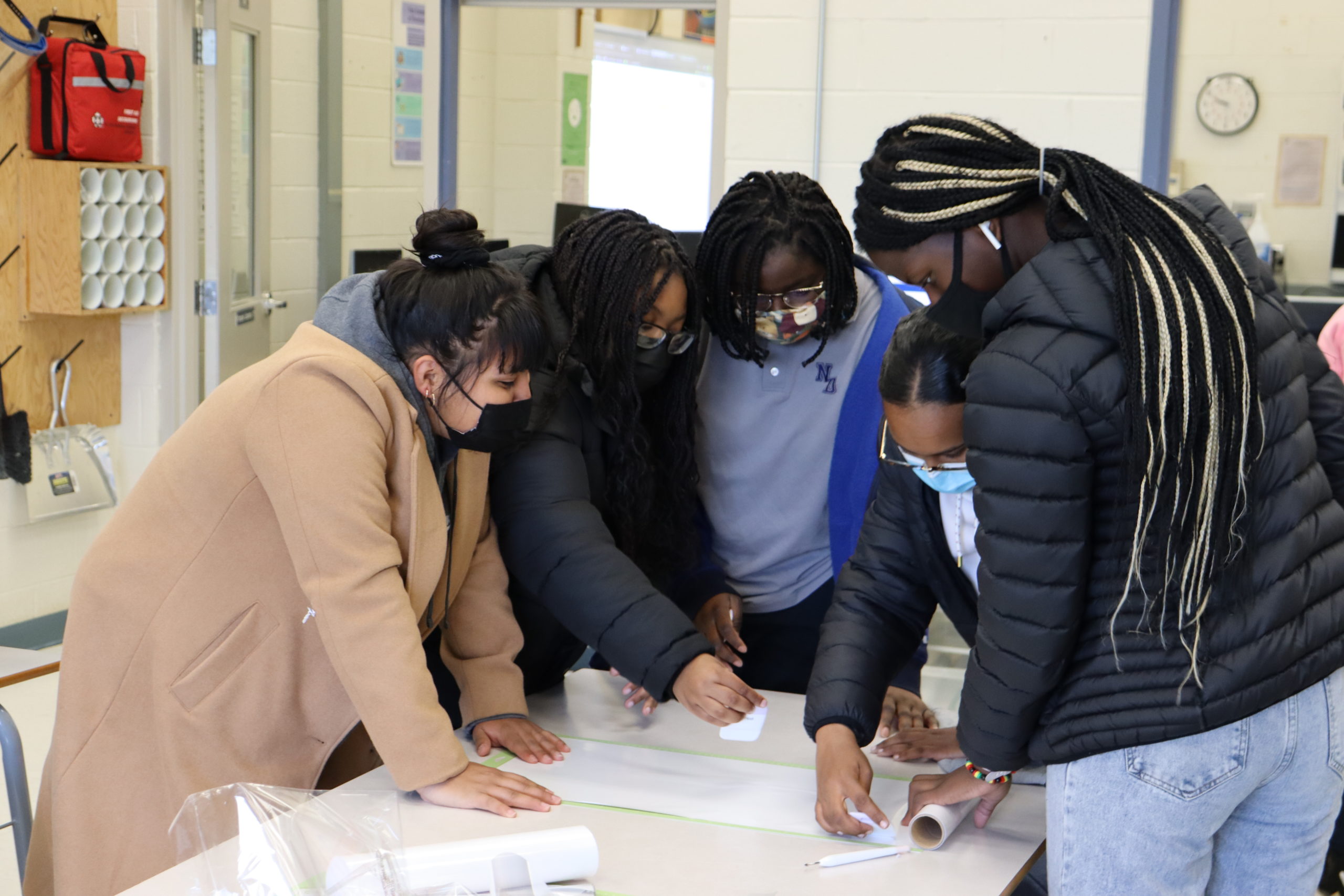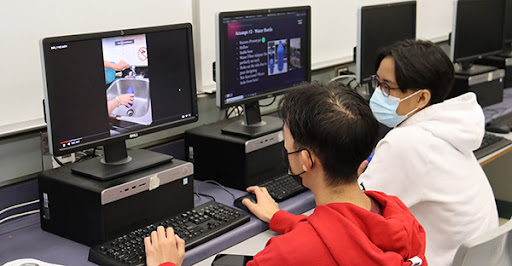

Students collaborating on their Ciena Solutions Challenge project. Photo credit: Greg Zapasek
During the early days of the pandemic, there were protocols at my school that isolated cohorts of students to limit the number of people they were exposed to per day. This meant that students would be limited to two classes a day with double the class time (different from the regular four-period day). My challenge became keeping my students engaged in longer classes. As a result, I found myself spending time conversing with students about topics that left the curriculum expectations of the course and entered into self-directed learning. A lesson such as identifying linear relations would morph into a research project evaluating the value of bitcoin. Students would turn to their phones, not to scroll through TikTok videos, but to look at stock values as they played virtual stock market simulators. I was trying to find activities that my students could participate in, as opposed to passively absorbing information. The benefit of being given the challenge of “pivoting” from the norm allowed for experiments that built student confidence.
“The attitude of asking whether ‘am I doing it right?’ changed to ‘check out what I am doing.’ This increase in student confidence gave me goosebumps. I try to reenact this as I continue to use Challenge Based Learning in my classroom.” – Greg Zapasek

Prototyping during the design cycle of the project.
Photo Credit: Greg Zapasek
Starting with some basics on business etiquette, I offered students an opportunity to practice how to communicate with organizations via email, how to interview, and how to address themselves on the phone—and that opened the floor to what it meant to be an activist. We spoke about the United Nations Sustainable Development Goals and students individually decided on an initiative that they wanted to learn more about. Encouraging each other to join their cause, the class broke up into smaller groups and created proposals which illustrated their action plan, required resources, and estimated timelines. At no point did the words “success criteria,” “rubric,” or “assessment” show up. What did happen was that students built up the courage to communicate with community partners, initiating fundraising campaigns and activating the school population to be aware of community issues. To whatever degree these students demonstrated actionable change, they were the ones in the driver’s seat.

Student-designed sweatshirts for an Education for All awareness campaign. Photo credit: Greg Zapasek

Clean the Oceans project sticker campaign by @whalebabess. Photo Credit: @whalebabess
“If you allow yourself to let students engage where they find interest, they won’t just be working in your classroom, they will be thriving.” – Greg Zapasek
Aside from an almost constant series of conferences with students regarding their progress and feedback, assessment organically found its way into this classroom. I interviewed students about their experiences and asked them to speak to expectations that they felt were met and to quantify how well they demonstrated that learning. Even students who failed to meet their goals still managed to speak to the learning they achieved from the experience. This provided me with the affirmation that Challenge Based Learning works.
Whether you are already encouraging students with Challenge Based Learning on a slow day, in a mini lesson/unit task, or even invested in a semester long capstone project, if you allow yourself to let students engage where they find interest, they won’t just be working in your classroom, they will be thriving.
Advice for Engaging Students in Challenge Based Learning:
Advice for Supporting Student Voice and Agency:
– Greg Zapasek